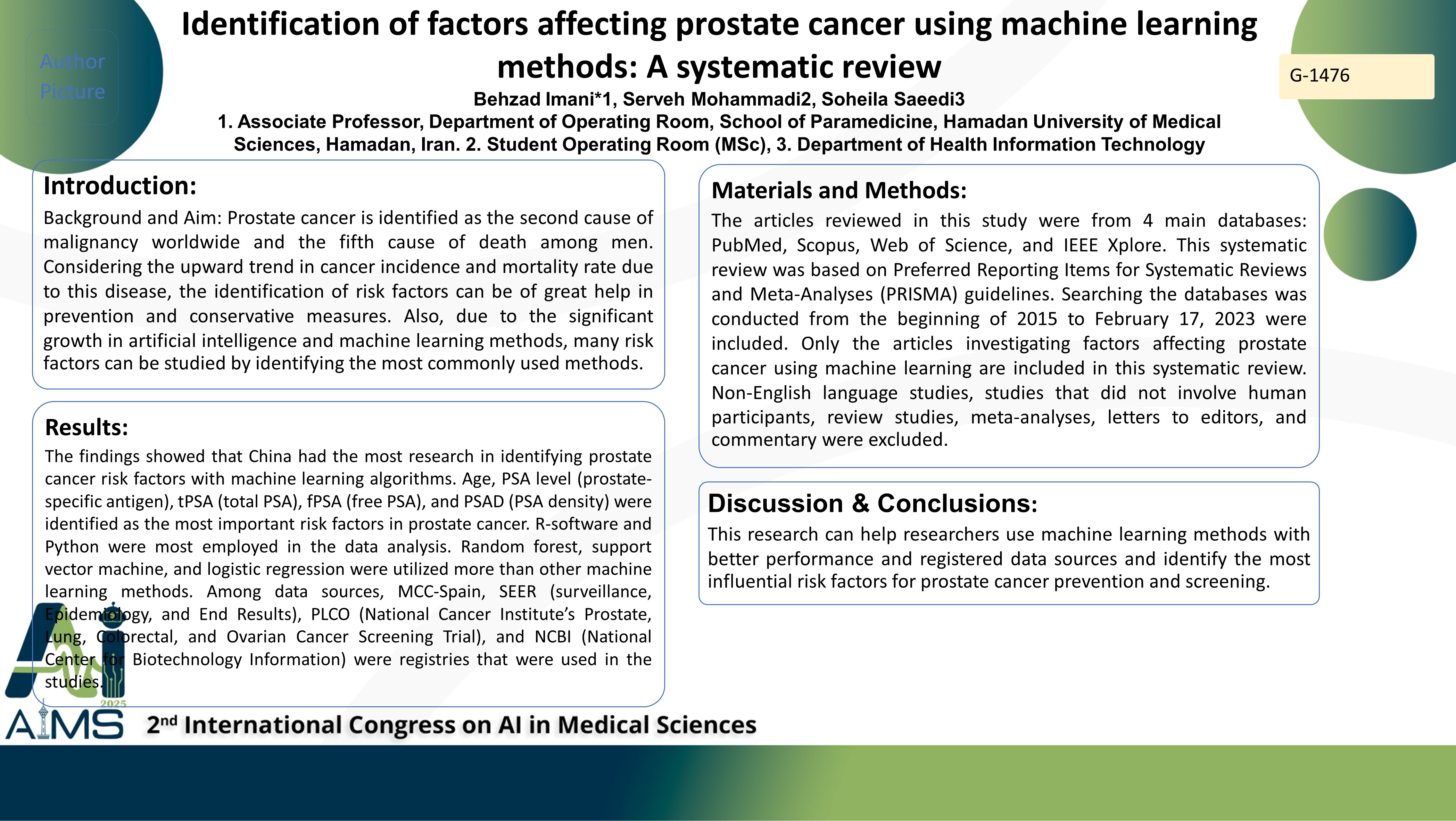Identification of factors affecting prostate cancer using machine learning methods: A systematic review
Code: G-1475
Authors: Dr.Behzad Imani * ℗, Serveh Mohammadi, Soheila Saeedi
Schedule: Not Scheduled!
Tag: Intelligent Virtual Assistant
Download: Download Poster
Abstract:
Abstract
Background: Prostate cancer is identified as the second cause of malignancy worldwide and the fifth cause of death among men. Considering the upward trend in cancer incidence and mortality rate due to this disease, the identification of risk factors can be of great help in prevention and conservative measures. Also, due to the significant growth in artificial intelligence and machine learning methods, many risk factors can be studied by identifying the most commonly used methods. Methods: The articles reviewed in this study were from 4 main databases: PubMed, Scopus, Web of Science, and IEEE Xplore. This systematic review was based on Preferred Reporting Items for Systematic Reviews and Meta-Analyses (PRISMA) guidelines. Searching the databases was conducted from the beginning of 2015 to February 17, 2023 were included. Only the articles investigating factors affecting prostate cancer using machine learning are included in this systematic review. Non-English language studies, studies that did not involve human participants, review studies, meta-analyses, letters to editors, and commentary were excluded. Results: The findings showed that China had the most research in identifying prostate cancer risk factors with machine learning algorithms. Age, PSA level (prostate-specific antigen), tPSA (total PSA), fPSA (free PSA), and PSAD (PSA density) were identified as the most important risk factors in prostate cancer. R-software and Python were most employed in the data analysis. Random forest, support vector machine, and logistic regression were utilized more than other machine learning methods. Among data sources, MCC-Spain, SEER (surveillance, Epidemiology, and End Results), PLCO (National Cancer Institute’s Prostate, Lung, Colorectal, and Ovarian Cancer Screening Trial), and NCBI (National Center for Biotechnology Information) were registries that were used in the studies. Conclusion: This research can help researchers use machine learning methods with better performance and registered data sources and identify the most influential risk factors for prostate cancer prevention and screening.
Keywords
Machine Learning, PRISMA, PSA, Systematic Review
